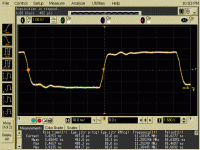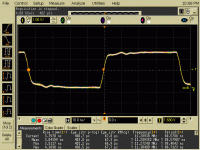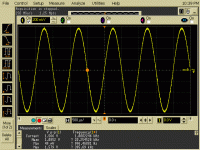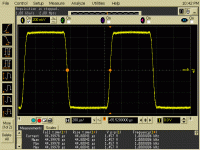actually mate, as far as audio goes youve picked on of the fastest moving and fickle trend following crowds; in headphone audio. I would advise against the xmos, it has pretty atrocious output jitter, particularly the eval board. something like 2ns and unless you want to take advantage of its high bandwidth functionality and must have driverless operation, not worth the effort IMO. it needs reclocking to be useful at all and that will increase component count, cost and development time considerably. Also its not exactly efficient
I would look into perhaps chatting to the amanero about his OEM chipset before xmos, its a cheaper, smaller and higher performance CLPD based design. unless you feel confident spinning your own design.
I would look into perhaps chatting to the amanero about his OEM chipset before xmos, its a cheaper, smaller and higher performance CLPD based design. unless you feel confident spinning your own design.
Last edited:
Ian,
I will look forward to your next generation design. In the meantime I think that the most popular design here is the O2 headphone thread. Take a look as it could be of use to you. I know the qusp is very involved and can give you hints of what people may be looking for. I would love to implement a few things in my self powered speakers I am working on such as either Bluetooth or WiFi, but I have to look at the limitations in sound quality for those before I go down that road. I am also looking at a USB connection and this also would take some doing.
Steven
I will look forward to your next generation design. In the meantime I think that the most popular design here is the O2 headphone thread. Take a look as it could be of use to you. I know the qusp is very involved and can give you hints of what people may be looking for. I would love to implement a few things in my self powered speakers I am working on such as either Bluetooth or WiFi, but I have to look at the limitations in sound quality for those before I go down that road. I am also looking at a USB connection and this also would take some doing.
Steven
about that, Steven, shoot me your addy so I can pop these O2 boards in the mail for you. you can have both just in case. thats if ive not missed the chance, which would make me feel a bit ****.
funny you mention such things, as far as USB, USB is now with the right implementation, surpassing any spdif design IMO. I have also started working on some wifi stuff myself with some new Ti chips that look very promising. i'm looking at uncompressed 24/48 rather than the compressed formats. these days its almost worth considering building something like a beaglebone mini headless linux PC into it and grafting a dac onto that, that way you can accept wifi, USB, ethernet, as well as digital crossover calculations. then use an android, ipad or computer to control everything over the network
funny you mention such things, as far as USB, USB is now with the right implementation, surpassing any spdif design IMO. I have also started working on some wifi stuff myself with some new Ti chips that look very promising. i'm looking at uncompressed 24/48 rather than the compressed formats. these days its almost worth considering building something like a beaglebone mini headless linux PC into it and grafting a dac onto that, that way you can accept wifi, USB, ethernet, as well as digital crossover calculations. then use an android, ipad or computer to control everything over the network
qusp,
I'll answer you in your personal email. You are way ahead of me in this and the implementation of some of what you are talking about is beyond my design comprehension at this point in time. One of the companies I have been looking at for the Bluetooth chips is CSR in England.
I'll answer you in your personal email. You are way ahead of me in this and the implementation of some of what you are talking about is beyond my design comprehension at this point in time. One of the companies I have been looking at for the Bluetooth chips is CSR in England.
no worries, that was the idea. i'll catch you in the morning, its 4AM here. raining steadily here but i'm taking it easy for once this weekend. taking care of as many of the projects that have built up as I can, fully hobby mode =)
Cheers for highlighting the high jitter from the xmos output qusp, the demo board also uses an external Phy which isn't so easy to buy.
I've been looking at the open source USB Dac project here
https://code.google.com/p/sdr-widget/
So it would possible to build my own based on this starting point
I also found a datasheet for the Via Technologies VT1620A and also caught sight of the VT1731 which will handle 32 bit 384K Audio....probably a bit too high end.
I might evaluate the VT1620A as it's easy to buy a cheap DAC <$20 with this device inside and get access to the audio over its SPDIF output. Buying the parts for production might be difficult though.
The same goes for GFEC Tenor TE7022, the ODAC would be a good one to compare.
Lots of options to explore...........
I've been looking at the open source USB Dac project here
https://code.google.com/p/sdr-widget/
So it would possible to build my own based on this starting point
I also found a datasheet for the Via Technologies VT1620A and also caught sight of the VT1731 which will handle 32 bit 384K Audio....probably a bit too high end.
I might evaluate the VT1620A as it's easy to buy a cheap DAC <$20 with this device inside and get access to the audio over its SPDIF output. Buying the parts for production might be difficult though.
The same goes for GFEC Tenor TE7022, the ODAC would be a good one to compare.
Lots of options to explore...........
yeah from what i've heard Via arent exactly friendly to deal with on a small level. sorry I meant to link the amanero GB thread too being a forum member you can get one for 39EU because we've bought heaps. there is quite a bit of backdoor functionality available if you have the ability to program the CLPD
The Amanero board looks good too, I'd need to combine my CPLD with the back end clocking functions but this would work well. I'll look into it.
I also found a possible distributer for the VT1620A, I need to enquire about lead times but I'm getting pricing below $5 per piece in low quantities.
For a device that handles 44.1/48/88.2/96/176.4/192kHz sample rates over SPDIF and in a 48 pin LQFP package it hits the spec.
I just bought a SYBAUSA SD-AUD20101 from Amazon which has the VT1620A inside. It even breaks out the audio signal on a mini Optical jack. Syba's website also provides a Driver which I assume is for 24/192K. So I'll give this a try first and wire mod my DAC connections up to the WM8740.
I also found a possible distributer for the VT1620A, I need to enquire about lead times but I'm getting pricing below $5 per piece in low quantities.
For a device that handles 44.1/48/88.2/96/176.4/192kHz sample rates over SPDIF and in a 48 pin LQFP package it hits the spec.
I just bought a SYBAUSA SD-AUD20101 from Amazon which has the VT1620A inside. It even breaks out the audio signal on a mini Optical jack. Syba's website also provides a Driver which I assume is for 24/192K. So I'll give this a try first and wire mod my DAC connections up to the WM8740.
I managed to grab a good scope for a couple of hours, so made some jitter measurements on MCLK which is sourced from the Wolfson WM8804. RMS clock jitter is sub 70ps from USB and ~80ps from a CD which happened to be just a Sony CD Walkman.
I also measured the Square response (22KHz anti-alias filter applied) into a pair of AKG headphones which looks clean with 44us rise/fall time.
I also measured the Square response (22KHz anti-alias filter applied) into a pair of AKG headphones which looks clean with 44us rise/fall time.
Attachments
- Status
- Not open for further replies.
- Home
- Amplifiers
- Headphone Systems
- USB DAC & headphone Amp with 3D Printed Enclosure



